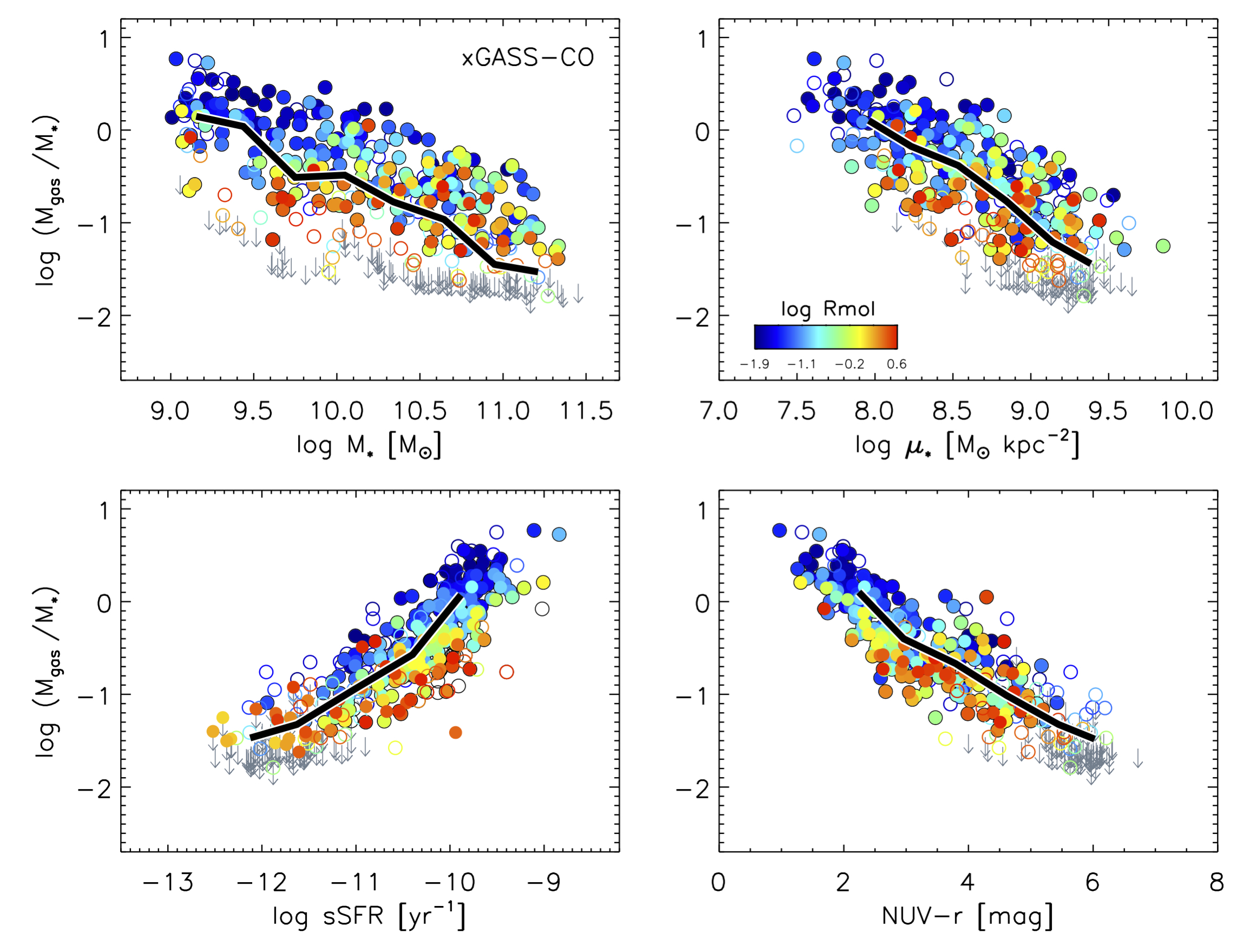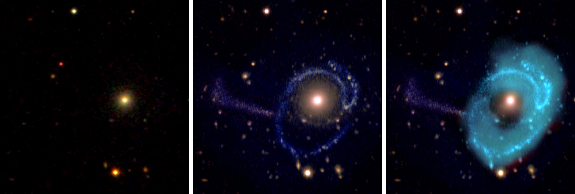Science with xGASS
xGASS is the culmination of several years of effort to gather deep HI observations for a stellar mass-selected
sample of ∼1200 galaxies with homogeneously measured optical and star formation properties. Our sample spans
over 2 decades in stellar mass (M
*=10
9 − 10
11.5 M
⊙).
We are using these
data to address a series of open questions in galaxy evolution.
Below are some examples, but please have a look at our
publication page
for all the papers based on xGASS data published so far.
Total gas scaling relations.
We combined HI and CO data for a representative subset of xGASS galaxies to quantify the total (atomic+molecular) gas scaling
relation in the local Universe. We show that the gas fraction of galaxies monotonically decreases with stellar mass, stellar surface density
and color. Most intriguingly, we show that the scatter in these relations is driven by changes in molecular-to-atomic gas mass ratio.
The galaxies with the highest total gas fractions in xGASS have six times more mass in cold gas than stars
(
Catinella et al. 2018).

Overview of xGASS scaling relations for the total cold gas content of galaxies,
based on the subset of ~500 systems with both Arecibo and IRAM observations (xGASS-CO).
Clockwise from the top left, the total gas fraction is plotted as a function of total stellar
mass, stellar surface density, NUV-r color and specific star formation rate.
Points are color-coded by molecular-to-atomic gas mass ratio, Rmol
(empty circles indicate galaxies detected in one gas phase only; gray
downward arrows are galaxies with upper limits in both, for which Rmol is not defined);
thick lines are running medians.
Gas-rich central galaxies in small groups and their connections to cosmic web gas feeding.
We show that central galaxies in small groups are more gas-rich and more actively forming stars than
centrals of similar stellar mass found in isolation. This result suggests that central galaxies in small
groups may still be fed today by pristine gas accreting via filaments
(
Janowiecki et al. 2017).

HI gas fraction of xGASS central galaxies plotted as a function of stellar mass. Left panel: isolated galaxies;
right panel: group galaxies (N=2 in dark green and N>2 in light green), with averages shown by large red diamonds
and green squares, respectively. At low stellar masses, central galaxies in groups are rarely gas-poor and have
HI gas fractions that are on average ∼0.3 dex larger than those in isolation.
GASS 3505: the prototype HI-excess, passive galaxy.
We discovered a class of objects known as HI-excess galaxies, which show unusually large HI reservoirs compared
to what expected based on their star formation activity. The prototype of this family is konwn as GASS 3505. In optical,
this object looks like a red-and-dead elliptical. However, our HI observations reveal a huge reservoir of atomic gas
(10 billion solar masses) that is not feeding star formation. Objects like this could help us gain additional insights
into the gas cycle in galaxies (
Geréb et al. 2016).

Left: SDSS optical image of GASS 3505. Middle: Deep optical image highlighting low surface brightness stellar streams.
Right: HI gas distribution (blue) overlayed onto the optical image.
For more details about xGASS science, see our publications.


